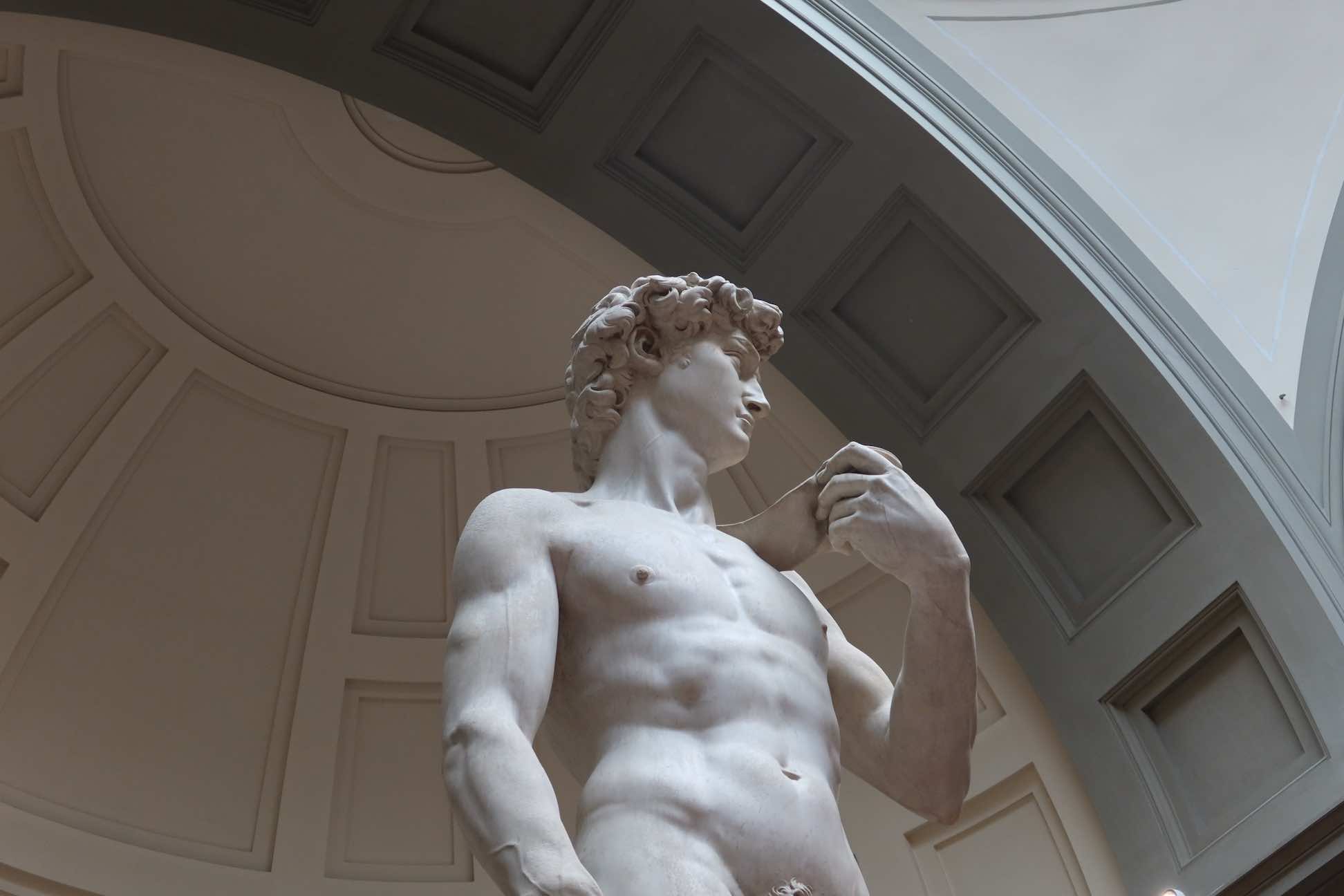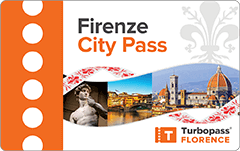- Sign up & get a FREE ebook Subscribe Today!
- Florencewise Home Page
- What to do in florence
- medici chapels
Why You Should Visit the Stunning Medici Chapels in Florence
Have you heard of the gorgeous Medici Chapels in Florence?
Home to the famous Princes Chapel, striking artwork depicting the old and new testaments, and several Medici tombs, this is a must-see while you're in town.
The Chapels of the Medici in Florence - Everything you need to know
If you're planning to visit the Basilica of San Lorenzo during your trip to Florence, you may as well hop over to the adjacent Medici Chapels.
It's one of the most stunning mausoleums in Italy, and is nestled right in the heart of Florence as part of the San Lorenzo church complex.
I have to say, it's one of my favorite places to explore!
 The Medici Chapels are part of the complex of the Basilica San Lorenzo, which is well worth visiting also!
The Medici Chapels are part of the complex of the Basilica San Lorenzo, which is well worth visiting also!But if you're not sure what you'll actually see when you visit, we're here to fill you in.
Not only will we cover what the Medici Chapels (Capelle Medicee in Italian) are, but we'll dive into the architecture and history of the location too.
Oh, and we'll even enlighten you with booking information to make your trip run seamlessly!
On this page we'll be talking about:
- What are the Medici chapels?
- The New Sacristy Medici chapel
- The Chapel of the Princes Medici chapel
- How to visit the Medici chapels
What are the Medici chapels?
The de Medici family were the Italian bourgeois family who ruled Florence between 1434 to 1737.
They had a stronghold over Florence for over 300 years except for during a couple of break periods between 1494 to 1512 and 1527 to 1530.
They’re best known for setting up the Medici Bank (which was the largest source of their continued wealth!) but during their rule, they also hugely enriched the arts and commissioned some gorgeous attractions around the city.
Want to learn more about the Medici family?
Join this dedicated tour which allows you to follow along in their footsteps across Florence!
While the Basilica di San Lorenzo is one of the Medici family’s major contributions to Florence’s landscape, they’re also responsible for the Pitti Palace, the Uffizi Gallery, and the Boboli Gardens.
The Basilica di San Lorenzo was initially the family’s parish church.
However, Giovanni di Bicci commissioned the famous architect Filippo Brunelleschi to redesign the building and turn the church into an official burial spot for the Medici family.
Why were the Medici Chapels created?
So, now that we’ve covered some of the history behind the Medici Chapels, let’s uncover when and why they were built.
The intended purpose of the Medici Chapels was for them to function as a dedicated mausoleum for prominent members of the Medici family.
It was Pope Leo X (a member of the de Medici family) that first floated the idea with the prized architect and sculptor Michelangelo in 1520.
The famous David sculpture (now in the Accademia) had already stunned society and Michelangelo's talent was in great demand.
Pope Leo X wanted the design to mirror the Old Sacristy designed by Brunelleschi while still being a grand tribute to his late family members.
Michelangelo started work on the project but this was interrupted when Leo X died in 1521.
Luckily, Cardinal Giulio de Medici was elected to the papacy in 1523 and became Pope Clement VII, restarting work on the chapels.
Michelangelo worked on the project until 1533, but his move to Rome meant that his pupils finished the job.
The New Sacristy was completed first, but the Chapel of the Princes wasn't finished until much later.
When you consider that construction on the chapels finished in 1640, the entire process took a while.
🤙 Roaming in Italy? 📱
Get yourself an Italian eSIM for calls, messages and data when traveling here.
Save on data charges with plans from just 19€ from Holafly - our recommended eSIM provider - click here to find out more.
The New Sacristy Medici chapel
A brief history and rundown of the New Sacristy
The New Sacristy (otherwise known as the Sagrestia Nuova) is a grand mausoleum that Pope Leo X asked Michelangelo to design.
He intended the monumental complex to house the remains of his brother Giuliano de Medici, Duke of Nemours and his nephew Lorenzo de Medici, Duke of Urbino who had both suffered untimely deaths.
One of the first things that you may notice about the New Sacristy are the incredible sculptures.
The statue of “Night” is designed to represent dread and fear, while the statue of “Dawn” is a beautiful woman who opposes the impending night.
It’s also worth mentioning that the eyes of the funeral monuments of Lorenzo the Magnificent and Giuliano face Michelangelo's Madonna and her child.
 Follow the direction that the eyes on the depiction of Lorenzo on his tomb take and you'll find the Madonna and child
Follow the direction that the eyes on the depiction of Lorenzo on his tomb take and you'll find the Madonna and childThe Madonna doesn’t look at either brother to create the appearance of harmony and a balance of power among the three statues.
In short, the magnificent chapel is at the center of the universe and is a major feat of architectural and artistic design.
Initially, Michelangelo wanted to place tombs for Lorenzo and Giuliano in the center of the space.
However, this didn’t appeal to Pope Clement VII, who chose to position the tombs against the walls instead.
The tombs face toward each other from two opposing walls and are separated by a statue of the Virgin Mary and her child.
You’ll also spot statues of Saints Cosma and Domiano who are intended to protect the Medici family.
Why is the New Sacristy so special?
As you might have guessed from the previous rundown of the sculptures, the New Sacristy is largely considered a Renaissance masterpiece as it contains ingenious artistic designs by Michelangelo.
But it’s also one of the few examples of Michelangelo’s work where he designed the space itself as well as the sculptures.
His use of natural light to draw attention to the sculpture work is stunning, with the window placement beautifully casting lightness and shadow over the space.
Learn more about Michelangelo
Want to discover more details about the fascinating life of Michelangelo and his iconic works?
This book sets out the engaging story of how Michelangelo's defining masterpiece of the Sistine Chapel came into existence.
Disclosure : If you make a purchase through a link on this page, I may receive a small commission - at no extra cost to you. Thank you for supporting my site!
Is there anything more to see here?
As of November 2023, visitors can head down to Michelangelo’s “Secret Room”.
It was first discovered in 1975 by restorer Sabino Giovannoni when he was carrying out cleaning tests.
It was unused and sealed, covered almost entirely by furniture and storage items.
However, after removing layers of plaster, Giovannoni uncovered a huge display of sketches from when the famed artist was forced underground for two months during Medici persecution in 1530.
It’s believed that many of the sketches match plans for the New Sacristy, but the content is still subject to debate amongst art scholars.
Just be warned that the room is incredibly small at just ten meters long by three meters wide.
So, be sure to get in and out quickly as the maximum time you’ll be allowed to stay is 15 minutes!
Oh, and you need to descend twelve narrow steps, making the room unsuitable for those with mobility issues.
Check out our top tips for making the most of your time in Florence:
The Chapel of the Princes
The Chapel of the Princes (Cappella dei Principi) was built between 1604 and 1640 by the prized architect Matteo Nigetti.
The lavish chapel was meant to showcase the vast achievements of the Medici family members while acting as a burial site for the prominent Medici dynasty.
The chapel’s architecture firmly falls into the Renaissance style of the sixteenth and seventeenth centuries.
It boasts a grand dome and interior decorated with semi-precious stones (pietre dure) and smooth marble.
The chapel has an octagonal floor and is dotted throughout with bronze gilded statues made by the brothers Ferdinando, Pietro, and Tacca.
Two of the most prized sculptures are of Ferdinando I de Medici and Cosimo II de Medici (Medici Grand Dukes) and both men are holding ornate sceptres.
Surrounding the Cappella dei Principi, you’ll find the coats of arms of Florence’s sixteen main cities.
They were intended to represent universal allegiance to the Medici, and are made from lapis lazuli, coral, porphyry, high-quality granite, mother of pearl, marble, and alabaster.
Considering their age, the coats of arms are still surprisingly vibrant with shades of yellow, burgundy, green, and white shining through.
If the coats of arms weren’t impressive enough, you’ll also find striking tile work on the ground along with several priceless paintings.
The most famous painting is probably the Supper at Emmaus at the Altar Medici.
But you’ll also want to pay particular attention to the Dome.
It hosts a cycle of frescoes that detail the scenes of Jesus’s life from the nativity to the crucifixion, resurrection, and Sacrifice of Noah.
The final fresco details the Last Judgment and gives the entire chapel an air of opulence and spirituality.
And honestly, the paintings of the frescoes by Pietro Benvenuti are worth the price of admission on their own!
How to visit the Medici Chapels
If you’re visiting the Florentine Basilica of San Lorenzo, it’s important to know that the Medici Chapels are a separate attraction, with technically a different address of Piazza Madonna degli Aldobrandini.
So, you’ll need to purchase independent tickets for both the church and the chapels if you want to cover the entire space.
 If you want to see details like this above the entrance to the Old Sacristy in the San Lorenzo basilica, you'll need to book a separate ticket
If you want to see details like this above the entrance to the Old Sacristy in the San Lorenzo basilica, you'll need to book a separate ticketIn my opinion, it’s always best to buy tickets for the Medici Chapel online in advance.
This way, you’ll skip the queues and guarantee yourself entry as this is one of Florence's most popular sights!
A typical ticket gives you access to the New Sacristy, the Old Sacristy, the Medici Tombs, and the Chapel of the Princes.
The current ticket price is €12 (plus a €4 booking fee), but you may qualify for a concession price or free ticket (make sure you check this before booking!).
You can also buy a combo ticket that includes the Michelangelo Secret Rooms, but this costs a further 20 euros for full price tickets and depends on availability.
In terms of opening hours, the chapels are open between 8:15AM and 6:50PM every day except Tuesday when they’re closed.
They’re also closed on Florence public holidays (like Christmas Day).
It’s worth noting that the Medici Chapels will be busy during the summertime, as this is when most tourists visit.
You’ll also need to remember that the last visiting slot is 45 minutes before closing time so plan accordingly!
If you can, visit the chapels outside of the peak tourist season (late spring or early fall) to try and reduce crowd levels.
This way, you can take your time getting close to the sculptures and paintings without being overwhelmed.
Florencewise's Top Travel Resources
Ready to book your trip to Florence? Take a look at these helpful links to companies we use and trust:
- Keep your travel spending simple with the Wise card, which removes all the worry about exchange rates and high transaction fees all over the world
- Search for and book your perfect accommodation
- Our complete guide to what to pack for Florence
- The number one travel accessory, a multi-point travel adapter and voltage converter
- Browse a huge range of tours in Florence and beyond
- Experience unique tours and special access to Florence's most popular sights
- Protect yourself with comprehensive travel insurance
Within this post there are some affiliate links for products and services. For more details about our affiliate policy click here.
Receive the latest Florence news, travel tips, insights and more!
Simply sign-up today for our free newsletter:
We are committed to respecting your data. Click for our Privacy Policy.
Comments? Questions? Suggestions?
Please come over to the private Facebook group and join in the conversation.
You will often find me there, happy to answer your questions / comments!
You will also meet other Florence lovers and experts, too.
What are you waiting for?

























